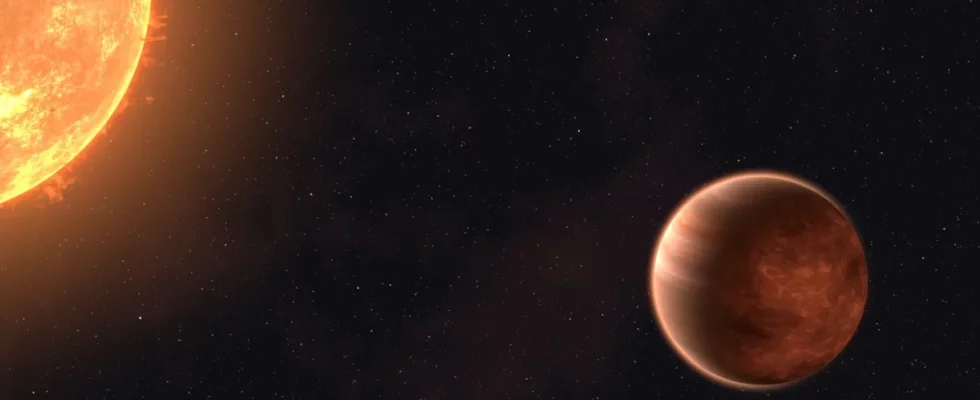The exoplanet WASP-43b, which orbits closely around its star, has two halves that differ greatly from one another, and on the half facing away from the star, immense storms prevent chemical reactions under clouds of liquefied rock or metal. This is how an international research team describes what observation data from the James Webb space telescope have revealed about the celestial body. The temperatures there are between around 600 and 1250 degrees Celsius, which is why the “hot Jupiter” does not resemble the largest planet in our solar system at all, apart from its mass and size. The analysis was made possible because the Mid-Infrared Instrument (MIRI) works similarly to a non-contact thermometer, those responsible explain.
Advertisement
Detailed insight possible
WASP-43b is about 280 light-years away and takes about 20 hours to orbit its star. So it is extremely close to him and at the same time passes in front of him from our perspective. The researchers have now taken advantage of this again, because with the Hubble Space Telescope it was already possible to detect hydrogen on the dayside of the exoplanet. This was possible with measurements taken while the exoplanet was directly next to the star from our perspective, before and after it disappeared behind it. Analyzes of the night side, on the other hand, focus on the exoplanet before, during and after it passes in front of the star. Only now the James Webb space telescope was sensitive enough for this.
The spectral measurements of the exoplanet have shown that there is no methane on the night side. However, this would have to be caused by chemical reactions of hydrogen and carbon monoxide, which typically occur on such celestial bodies – but which could not be detected using the technology used. The team explains the lack of methane with the enormous wind speeds that must exist between the side always facing the star and the side away from it. They would chase the substances over the night side at almost 9,000 km/h, which is why there wouldn’t be enough time for chemical reactions to occur. They also believe that the still very hot night side is surrounded by clouds that should consist of liquid rock droplets.
Overall, the data revealed a “complex, inhospitable world with strong winds and enormous temperature differences,” summarizes co-author Laura Kreidberg from the institute. The unprecedented level of detail in this description is thanks to the James Webb space telescope. The research work now presented underlines once again how diverse the climatic conditions on exoplanets can be “and that the Earth is special in many ways.” The James Webb Space Telescope’s NIRSpec near-infrared spectrometer will next be used to search for carbon monoxide on WASP-43b to further support the hypothesis. The previous work is now presented in the specialist magazine Nature Astronomy.
(mho)

